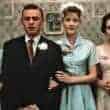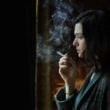In this interview, Colossal writer-director Nacho Vigalondo discusses developing the film’s aesthetic, its set design, and its subjective sound design.
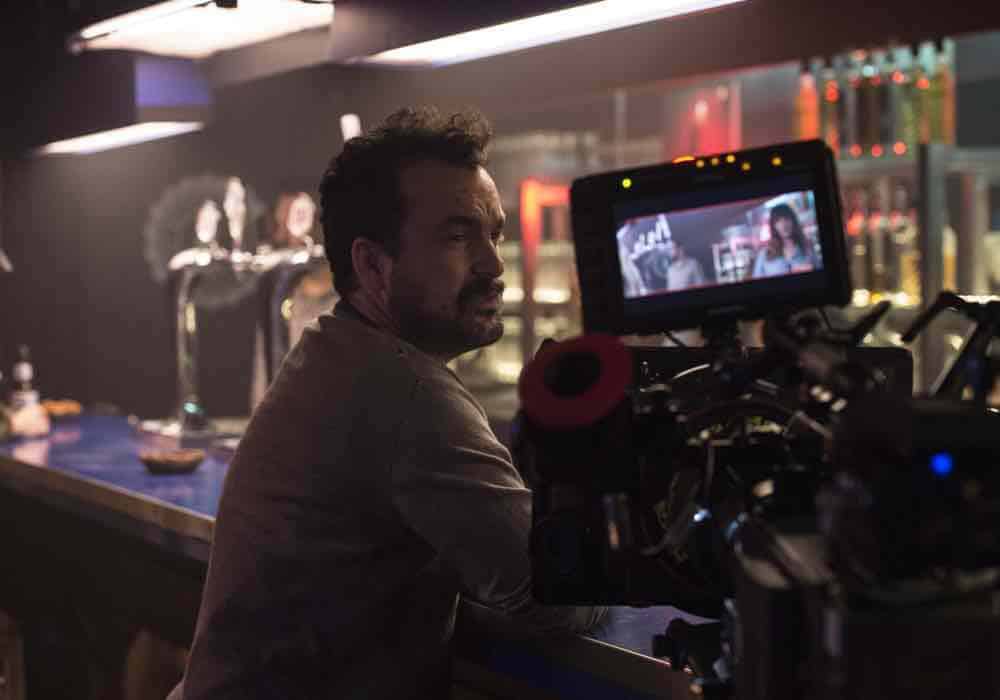
Writer-director Nacho Vigalondo’s new film, Colossal, opens in Seoul, South Korea, where a giant monster tramples on a mother and child. We then cut to Gloria (Anne Hathaway), returning home to her boyfriend, after a night of heavy drinking, only to cough up a pile of lies about her activities and whereabouts. For the next 20 minutes or so, the monster goes unmentioned.
Gloria returns to her hometown to live in her parents’ empty house in the suburbs while she attempts to put her life back together. Here, she runs into an old classmate, Oscar (Jason Sudeikas), who offers her a job at his bar, and a surprising amount of hospitality, until it’s clear he has dishonorable motives. When the news from Seoul finally reaches Gloria, she slowly puts together the pieces: somehow, she seems to be controlling the monster, wreaking havoc when she’s drinking. If she finds herself in the playground of a local park in her hometown, at a particular hour, everything she does is directly echoed by the monster in Seoul.
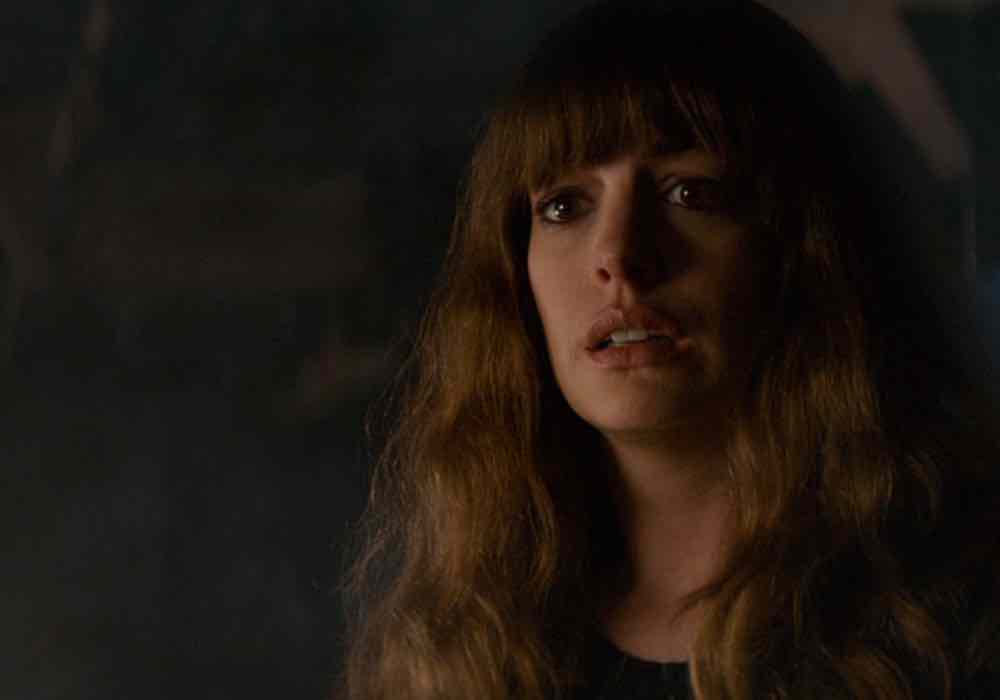
The Seoul monster or “kaiju” becomes a symbol for many things: Westerners’ ambivalence about how their actions affect people on the other side of the world, the ugly side of drinking, and the abusive control some men like to exert over women. Vigalondo doesn’t quite explore any of these fully, which leaves the film disappointingly inchoate. Nevertheless, Gloria’s journey to conquer her demons because she’s confronted with the externalization of them, is a thoughtful and rewarding one.
[clickToTweet tweet=”‘The movie is about these characters but also these locations: the park, the bar, Gloria’s place.'” quote=”The movie is about these characters but also about these locations: the park, the bar, Gloria’s place.”]
Shot in a formal, old-fashioned style, with vibrant colours and the camera on sticks, Vigalondo tells the story as much through plot as through the aesthetic: the framing, the visual texure, and the settings. Each of the space’s Gloria inhabits, from the park where she performs for Seoul to the bar that becomes her own personal hell, always features strongly in the frame, revealing much about the characters that the dialogue can’t. I talked to Vigalando about developing the film’s aesthetic, the set design, and the importance of the sound design.
Seventh Row (7R): How did you collaborate with your Director of Photography (DP), Eric Kress, to develop the colour scheme and formal aesthetic for the film?
Nacho Vigalando: We would try to make the movie feel epic, even during the most humble and small scenes. We wanted to give the movie the feeling of being something big even when it’s small. The camera needed to feel old-fashioned, like we were watching a movie from the past. For most of the [run] time, this movie could be interpreted as a kind of mumblecore film because it’s small scenes and people talking.
[clickToTweet tweet=”‘We would try to make the movie feel epic, even during the most humble and small scenes.'” quote=”We would try to make the movie feel epic, even during the most humble and small scenes. “]
We wanted to deliver all the epic feelings from the camera. That’s the reason the camera is always below the eyes of the actors. You can get a sense of the space, which these characters are occupying all the time. The movie is about these characters but also about these locations: the park, the bar, Gloria’s place. We wanted those places to be felt all the time. I wanted all those environments to have a lot of presence on camera.
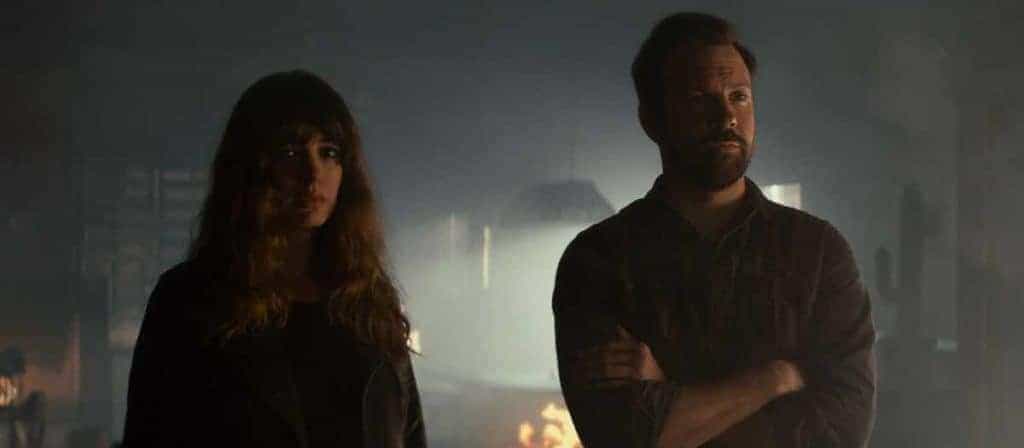
7R: There’s a real emotional content to the spaces. How did you work to design and photograph those spaces?
Nacho Vigalando: One of the most exciting parts of the pre-production is the location tour, when you visit the places where the movie is going to happen. There’s much more information in the background than in the actual dialogue. It describes the character in a way the other sequences don’t.
We wanted to treat Gloria’s home as an intimate place. Even though the house feels very empty and desolated, we wanted to treat her place as her shelter.
[clickToTweet tweet=”‘There’s much more information in the background than in the actual dialogue.’ – Vigalondo” quote=”There’s much more information in the background than in the actual dialogue.”]
I always go back to the script after we choose the locations. In this film, the park was exactly what we needed in the script. So nothing was changed. But the bar, for example, was much more interesting than the one that I described in the shooting script.
Initialy, the bar in my script, was just a bar, a big bar with many spaces. But what we found was this weird location that had no windows, that looked like this giant factory from the outside. From the inside, it had separated spaces. It was half a sports bar, half a country and western restaurant. It felt really appropriate to the story because the bar represents Oscar, and Oscar is a fragmented character. So I went back to the script, and I changed the dynamics inside the bar, so these fragmented elements in the background could be included in the story. This place, the bar, should work as a shelter, but it’s not at all. You can see how this place is wrong, at some point.
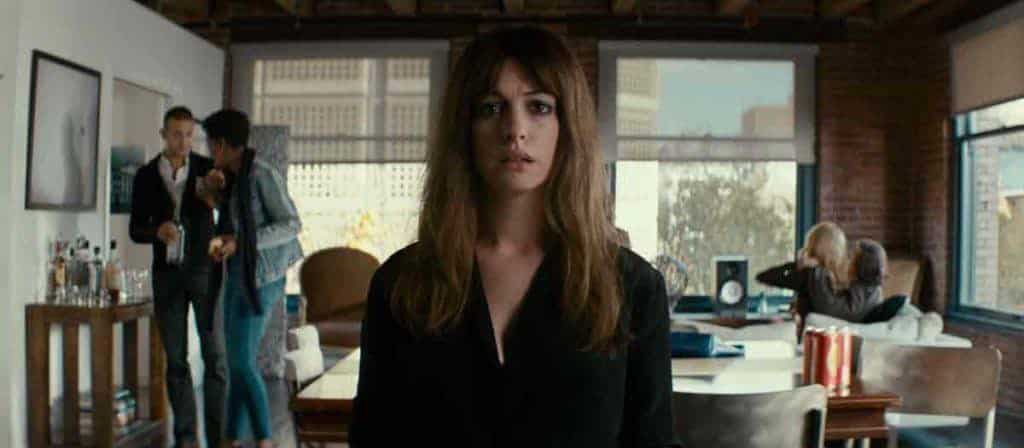
[clickToTweet tweet=”‘Your perception of the story is limited to Gloria’s perception.’ – Vigalondo” quote=”Your perception of the story is limited to Gloria’s perception.”]
7R: How did you think about the camera position and how to photograph Gloria versus all of the men in the film Colossal? It feels like we’re always closer to her.
Nacho Vigalando: When I make a sequence, and most of these sequences are dominated by Gloria, I like to stick to her point of view as much as possible. So it’s like the camera is around her. When we see her, she’s close to us. We get the sense that this movie is hers. When she’s dealing with another character, instead of getting closer to the other character, I prefer to respect Gloria’s point of view.
I love to write scripts in which the point of view of the character is respected most of the time. It’s like your perception of the story is limited to Gloria’s perception, which is something I feel can be really attractive, especially when you’re dealing with the aural space. When Gloria hears people cheering [her rescuing Seoul] from the house [down the street from the park where she’s acting as the monster], I feel really tempted to not show people cheering in the houses, clapping and cheering. I want to focus on her.
[clickToTweet tweet=”‘When I make a sequence, I like to stick to Gloria’s point of view as much as possible.'” quote=”When I make a sequence, I like to stick to Gloria’s point of view as much as possible.”]
7R: How did you think about the sound design for the film Colossal?
Nacho Vigalando: Once I’m sure that the audience gets what the film is about, I’m tempted to play things to a new level. When Oscar is stomping [in the playground], you can hear things happening in South Korea [as a consequence]. The second half of the film takes those liberties because people already knows what’s happening. For me, the goal of the film is that fight [between the characters], when you see these two fighting in the park.
You don’t need to see what’s happening in South Korea. You get a sense of the scale of the events because you already have enough knowledge of what’s happening. That’s playing with the language to a higher level, when you don’t need to show to express what’s happening. That’s one of the most enjoyable tools when making a shot list: knowing what people know so that you can bring it to the next level of understanding.
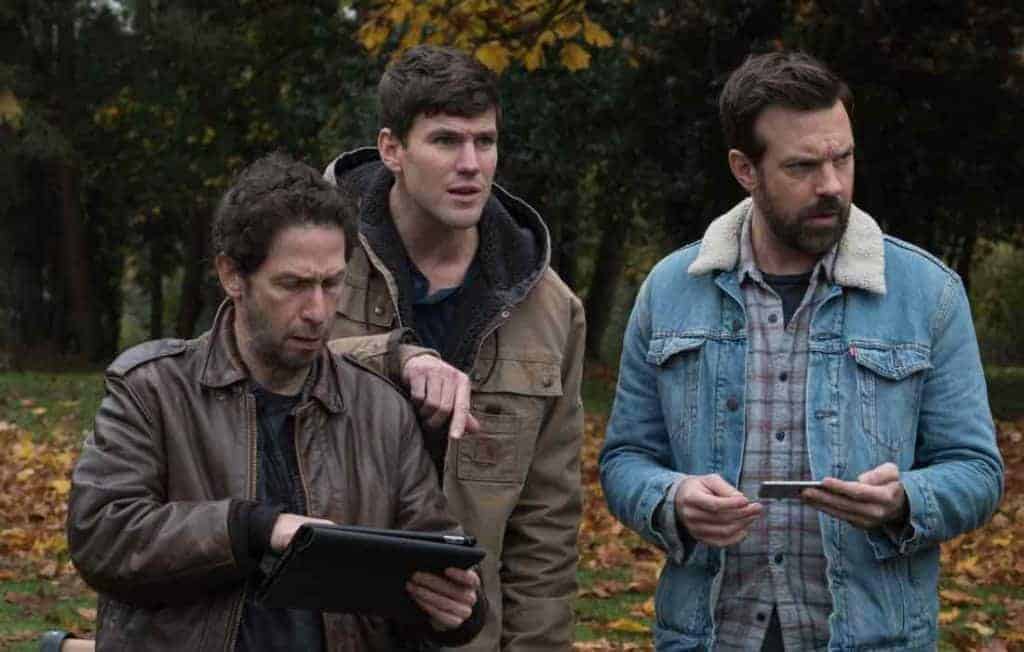
[clickToTweet tweet=”‘The way we shot the movie was realistic enough. We tried to approach the sound subjectively.'” quote=”The way we shot the movie was realistic enough. We tried to approach the subjective perception of the sound.”]
Through most of the film, the way the sound design is approached is in stuff happening far from the action. I remember when they were just watching things going on [in Seoul] in the iPad at the same time they were watching things going on [between Oscar and Gloria] in the park, we wanted to use the sound design to approach their subjective perception of the situation. It wasn’t a realist thing. You don’t hear what’s coming from the iPad all the time. The volume changes all the time. The way we shot the movie was realistic enough. We tried to approach the subjective perception of the sound. Most of the time, it’s Gloria’s perception. For example, if someone has the iPad turned on, you are constantly hearing things going on in Seoul. But we [as an audience] only hear it if those are important elements for Gloria.
Read more: Interview: Director Cristian Mungiu on the sound design and framing in Graduation >>
